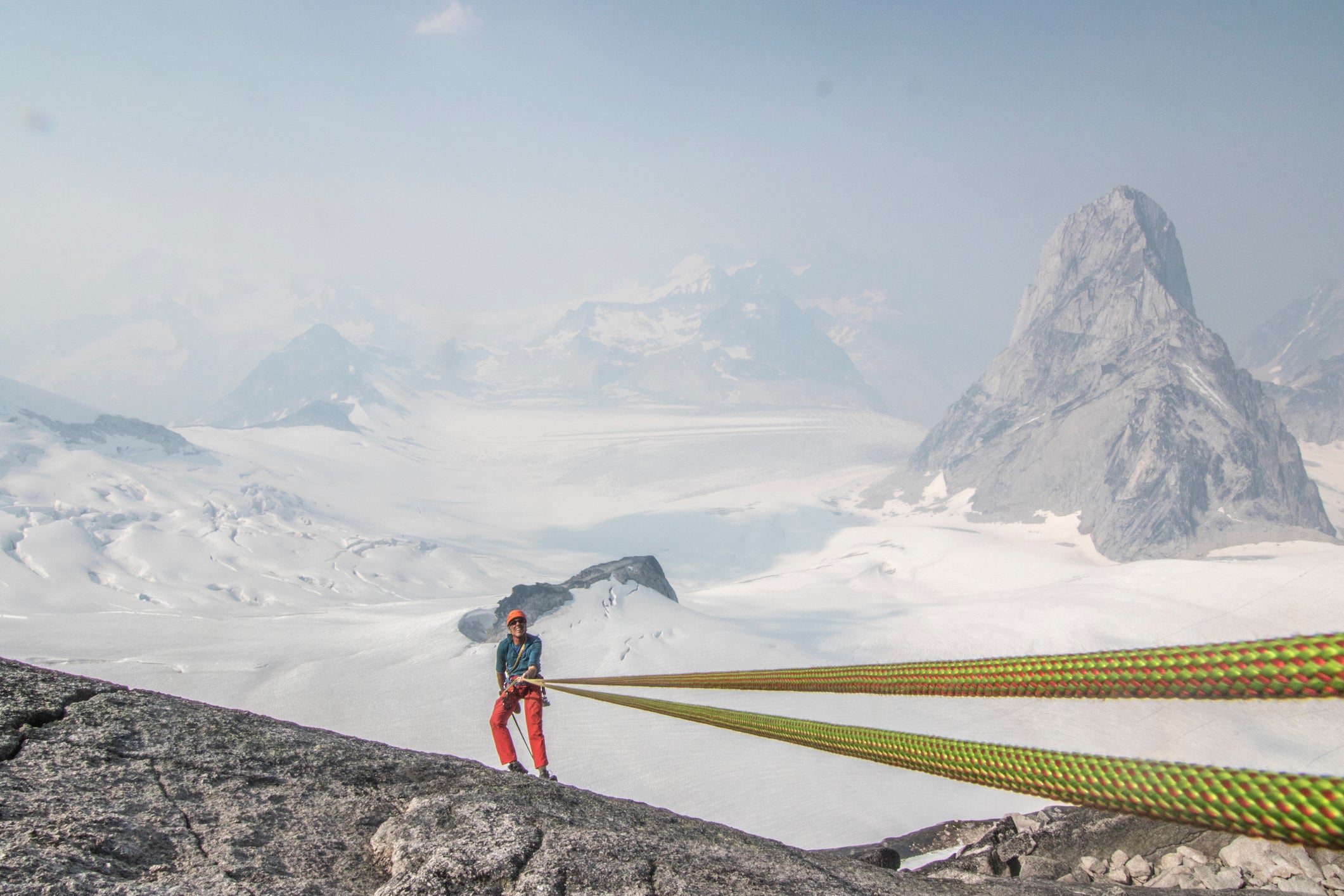Five Tips For Safer Rappelling in Alpine Terrain

Rappelling off of Pigeon Spire in the Purcell Mountains of British Columbia. (Photo: Getty Images)
The single most important thing when retreating in a storm is to maintain steady downward progress. Foremost, this means avoiding a stuck rope. As you descend, be mindful of rope-eating blocks or flakes. If you encounter a rope-eater, set your next rappel anchor on or near it, instead of continuing down to a lower stance. This way, if the rope does snag when you pull it, you’ll be right there to clean up the mess.
Rappelling in High Winds
In high winds, instead of trying to toss the rope down the cliff, keep it with you as you rap. Flake the extra rope through a sling and wear it like a saddlebag off your gear loop, feeding it out as you descend. When it comes time to pull, you’ll have to take your chances. Wait for a lull in the wind, and try to reel the rope in quickly before it blows around the corner and lassoes a flake.
Be Mindful of Double-rope Rappels
Double-rope rappels are tempting, but doing shorter raps is often more efficient overall. Short raps are easier to pull, there’s no knot to get stuck, partner communication is easier, and your second rope (if you have one) becomes a full backup rappel system if the line snags irretrievably. However, if you’ve been working down scrappy mixed terrain using one rope, don’t hesitate to break out the second if you encounter a clean ice-field or rock wall, or if finding an intermediate anchor becomes a problem.
One major drawback to doing shorter rappels is that you need more anchor points, which often means leaving more gear. Make a mental note of any fixed pins on the way up; these can be equalized with a nut to make a quick and inexpensive anchor. Consider carrying a spare set or two of old stoppers to leave behind, and remember that you can often improve marginal placements by welding them with a hammer or ice axe.

Equalizing Rappel Anchors
For equalizing, use your cordelettes first, cutting off just the amount you need for each anchor to minimize waste. It’s not necessary to leave carabiners; just thread the cordelette directly through the eye of the pin and the wire of the nut. You also don’t need a carabiner on the master point—for clean rappels, it is adequate to feed the rope directly through the cord. If you do want to leave a carabiner for ease of pulling, you can make an almost-locker by taping shut the gate of a non-locker.
A Tip for Extra-long Descents
For really long descents, carry spare cord for anchor building. Fifty feet or more of 6mm cord stashed in the bottom of the pack could be a godsend.